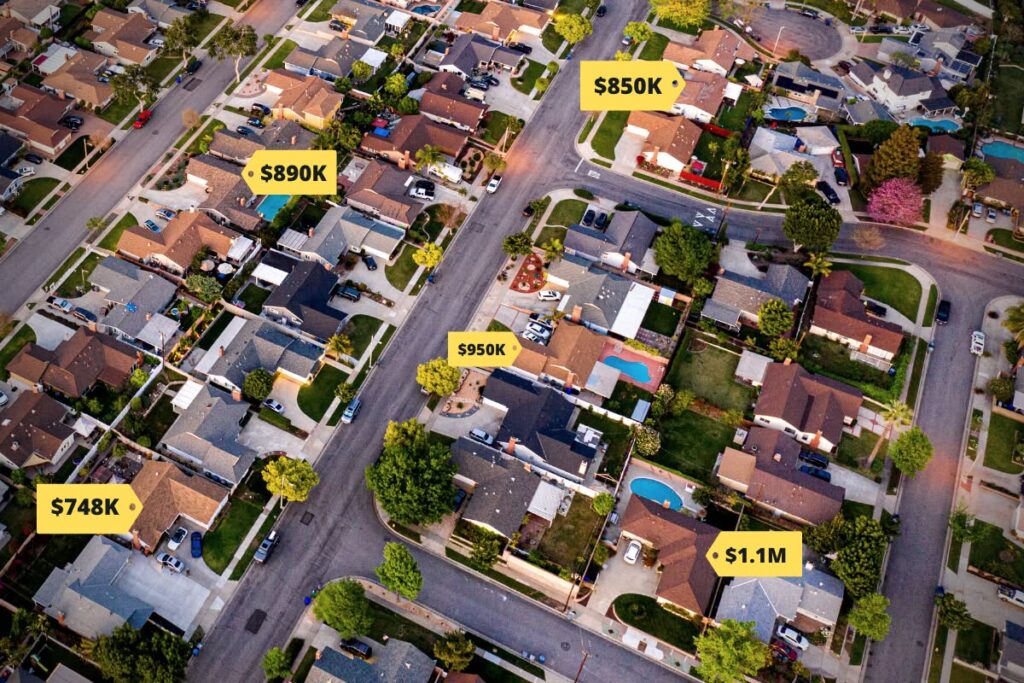When it comes to selling a home, many homeowners are surprised to learn that value isn’t a fixed number. In fact, there are more than six distinct groups who all assign a value to your property—and each one uses very different criteria. Understanding these perspectives is essential if you want to price your home wisely and set realistic expectations for the sale process.
1. YOU — The Homeowner’s Value
As the owner, you naturally assign the first value to your home. Your personal connection to the property runs deep. You see:
The weekend projects and DIY repairs you’ve done
The garden you planted and nurtured
The memories created in every room—birthdays, holidays, even quiet Sunday mornings
The frustrations and victories with your HOA
The irreplaceable emotional investment over the years
While these aspects matter deeply to you, they don’t directly translate into market value. Sellers often overestimate their home’s worth because of sentimental value—a common cognitive bias known as the endowment effect [1].
2. The BUYER — Lifestyle Fit and Perceived Utility
Each buyer evaluates a home based on how well it suits their lifestyle. They’re focused on how your property matches with their lifestyle and needs.
A remote worker may place high value on a quiet office space and fast internet
A young family may prioritize a safe neighborhood and proximity to schools
A retiree might look for single-level living and low-maintenance landscaping
For most Buyers, their value calculation centers on personal fit and perceived livability [2].
3. The APPRAISER — Data-Driven Market Verification
Appraisers work on behalf of lenders to ensure the home is worth the amount a buyer is paying. They are focused purely on objective, recent sales data.
Their job is to:
Compare your home to similar properties (comps) that have sold recently
Adjust values for square footage, location, condition, and amenities
Provide a valuation that supports the mortgage amount
Banks rely on appraisals to reduce risk. If the buyer defaults, the bank needs confidence they can recover most of the loan through resale or foreclosure [3].
4. The TAX ASSESSOR — Size, Land, and Location
Tax assessors calculate a home’s assessed value to determine property taxes—not necessarily the current market value.
Their assessment is typically based on:
Square footage of the home
Lot size
Location and zoning
Additional structures like garages or sheds
Interior condition, upgrades, or custom design rarely factor in. For example, a brand-new kitchen remodel may not influence your tax bill as much as adding a second garage [4].
This is why tax appraisals are often disconnected from a home’s actual market value.
5. ZILLOW — Automated Estimation Based on Public Data
Zillow’s Zestimate uses an algorithm that analyzes publicly available data:
Comparable sales (comps)
Square footage
Number of beds and baths
Geographic location
However, it cannot “see” inside your home. The Zestimate doesn’t account for:
Interior upgrades or renovations
Home condition or staging
Neighborhood nuances (like school ratings or upcoming construction)
In states like Washington, where home sale prices are public record, Zestimates are more accurate. But in Idaho, where sale prices are private, the accuracy can be off by tens of thousands of dollars [5].
Zillow itself states that its median nationwide error for off-market homes is about 6.9%, and the Zestimate should be used as a starting point, not as a determination of actual market value [6].
6. The REALTOR — Market Strategy and Balance
As a professional who bridges the gap between buyer expectations and appraiser standards, a Realtor provides the most balanced and strategic valuation.
A good Realtor:
Evaluates recent buyer behavior in your specific price range
Analyzes sold comparables, active competition, and market trends
Anticipates appraisal standards to avoid future deal issues
Prepares a Comparative Market Analysis (CMA), which estimates value based on both buyer appeal and data-supported logic
This approach ensures that the price you accept is likely to be backed up by an appraiser, helping avoid renegotiation or financing issues down the road.
Final Thoughts: One Home, Many Values
Each of these six parties brings their own perspective. As a homeowner, it’s important to understand that:
Your emotional connection matters—but won’t drive up your sale price.
The buyer’s needs and appraiser’s data are critical in setting a realistic price.
Zillow estimates and tax assessments are rough tools—not final answers.
A skilled Realtor helps you position your home in a way that aligns buyer desire with appraiser logic—maximizing your chance for a smooth, profitable sale.

References
Kahneman, D., Knetsch, J. L., & Thaler,
R. H. (1991). Anomalies: The Endowment Effect, Loss Aversion, and Status Quo Bias. Journal of Economic Perspecti
ves.
National Association of Realtors (NAR). (2024). Home Buyers and Sellers Generational Trends Report. https://www.nar.realtor/research-and-statistics
Fannie Mae. (2023). Appraisal Process Overview. https://www.fanniemae.com
International Association of Assessing
Officers. (2022). Property Assessment Guidelines. https://www.iaao.org
Idaho St
atesman. (2022). Why Idaho Zillow Estimates Are Often Inaccurate. https://www.idahostatesman.com
Zillow. (2024). How Accurate Is the Zestimate? https://www.zillow.com/zestimate
More From
Forever Home REalty
QUICK
Property Search
Search 100’s of North Idaho Homes
*Search Results Are Updated Every 5 Minutes So That You Always Have The Most Current Results.


